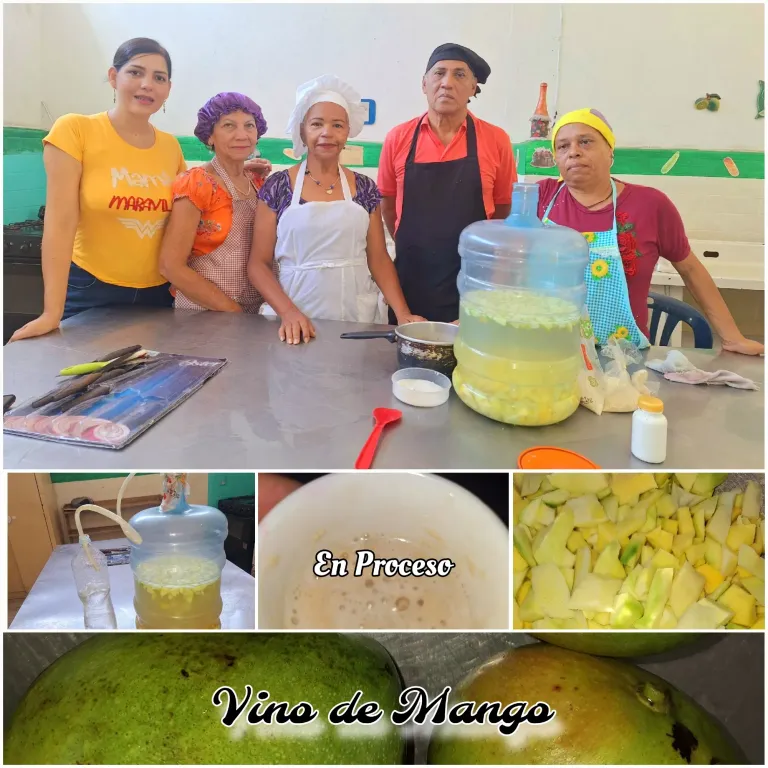
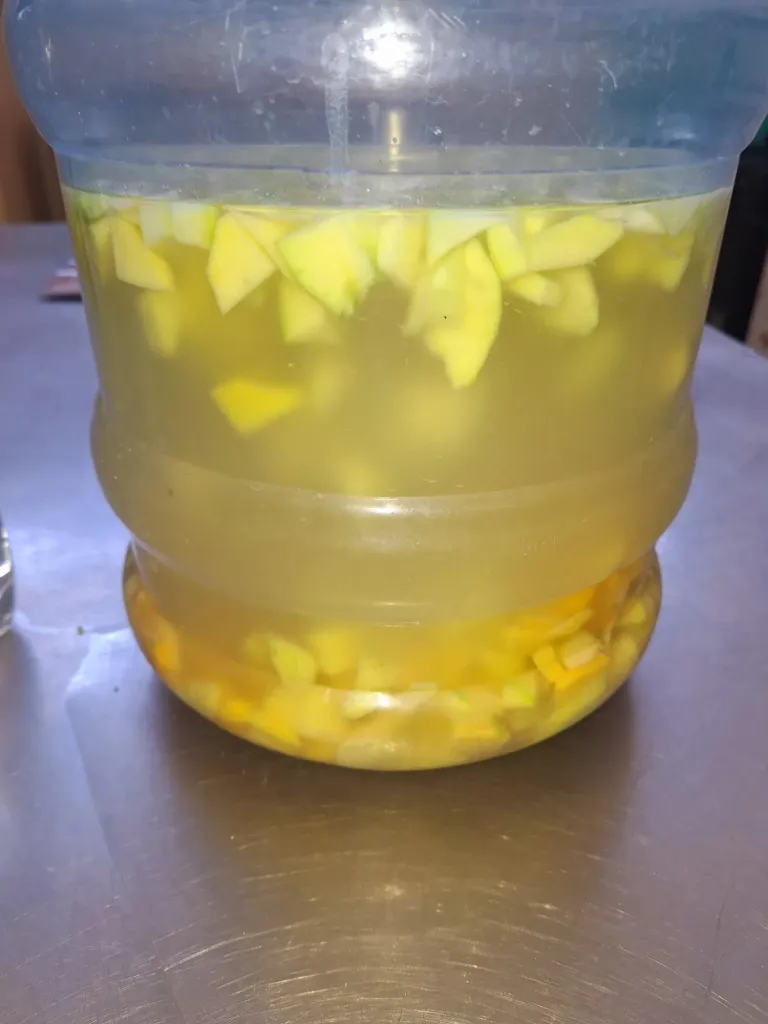

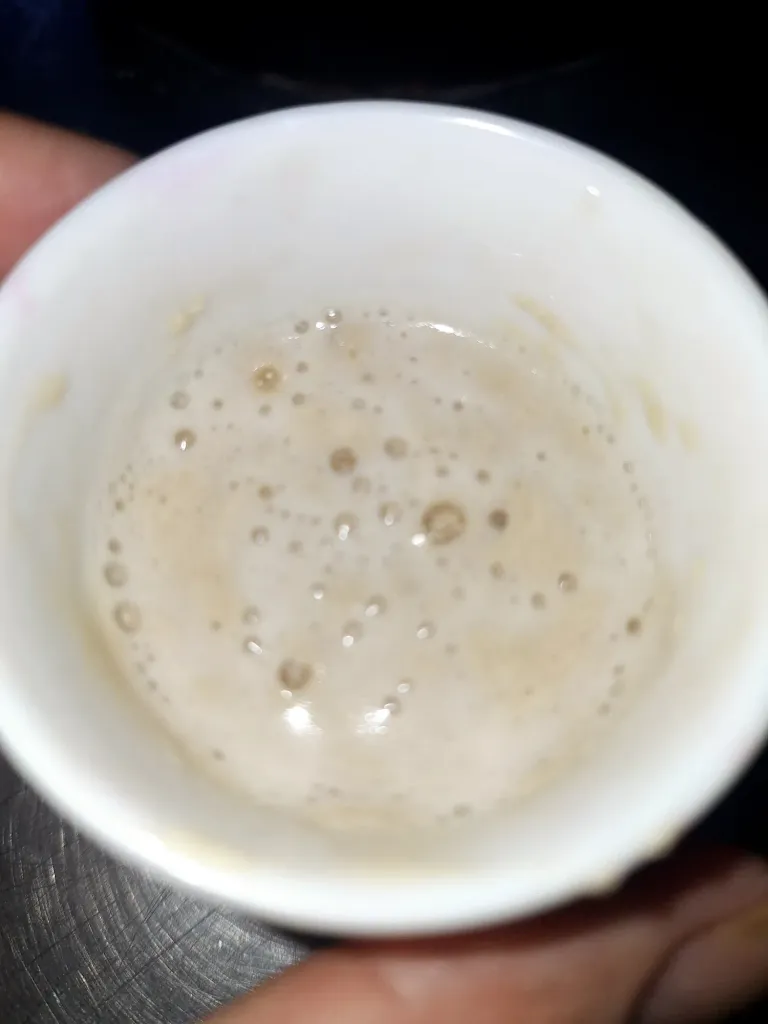
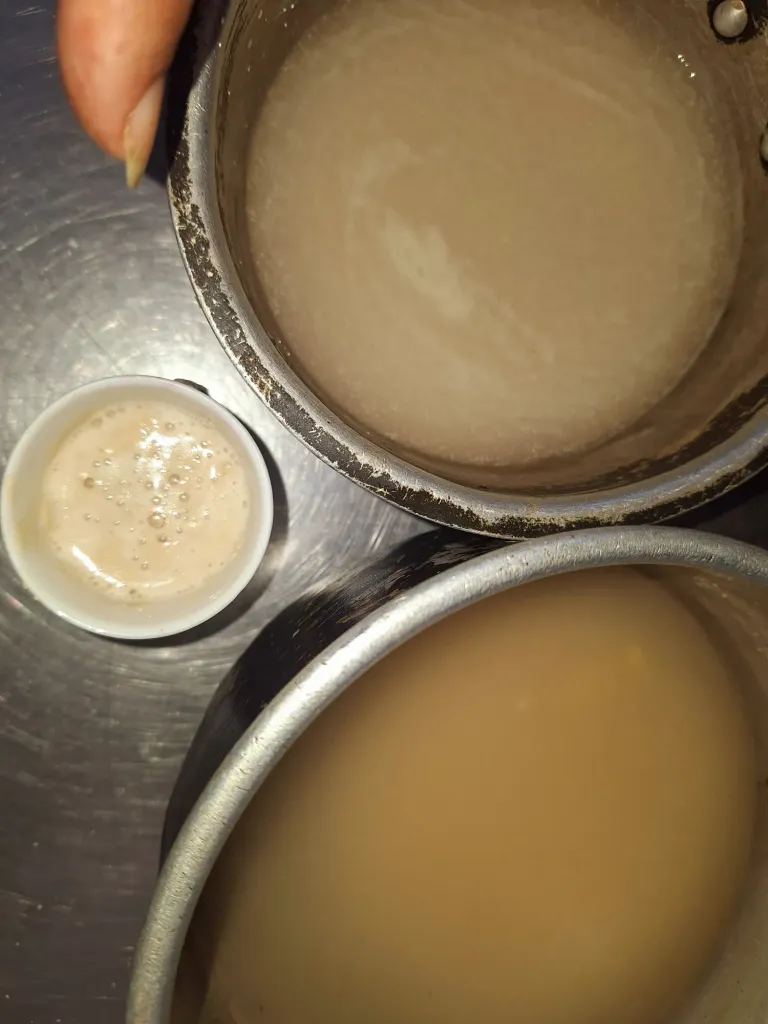
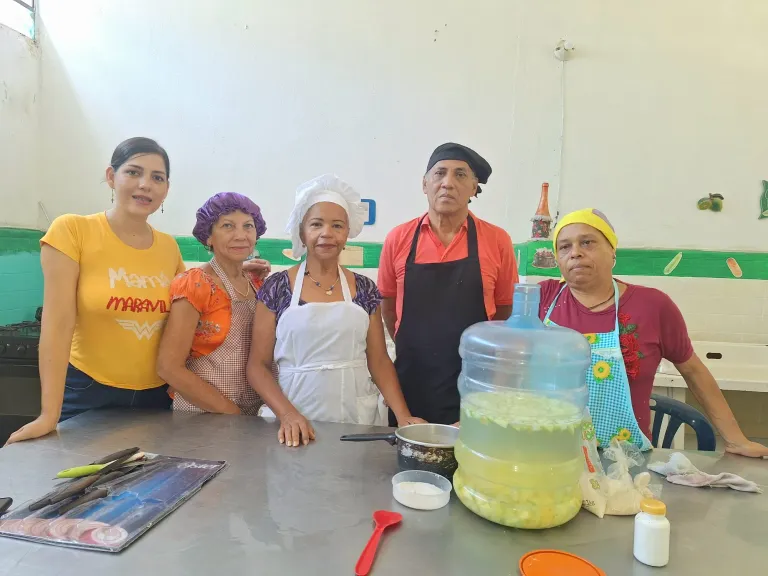
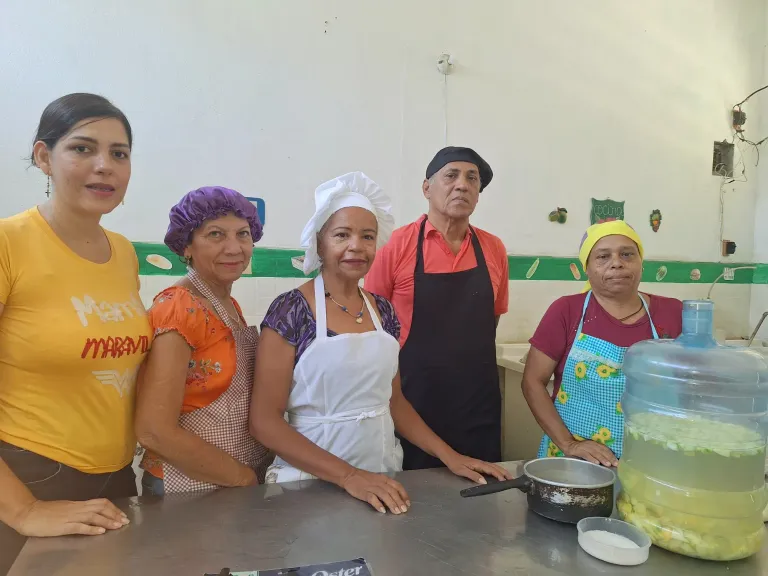
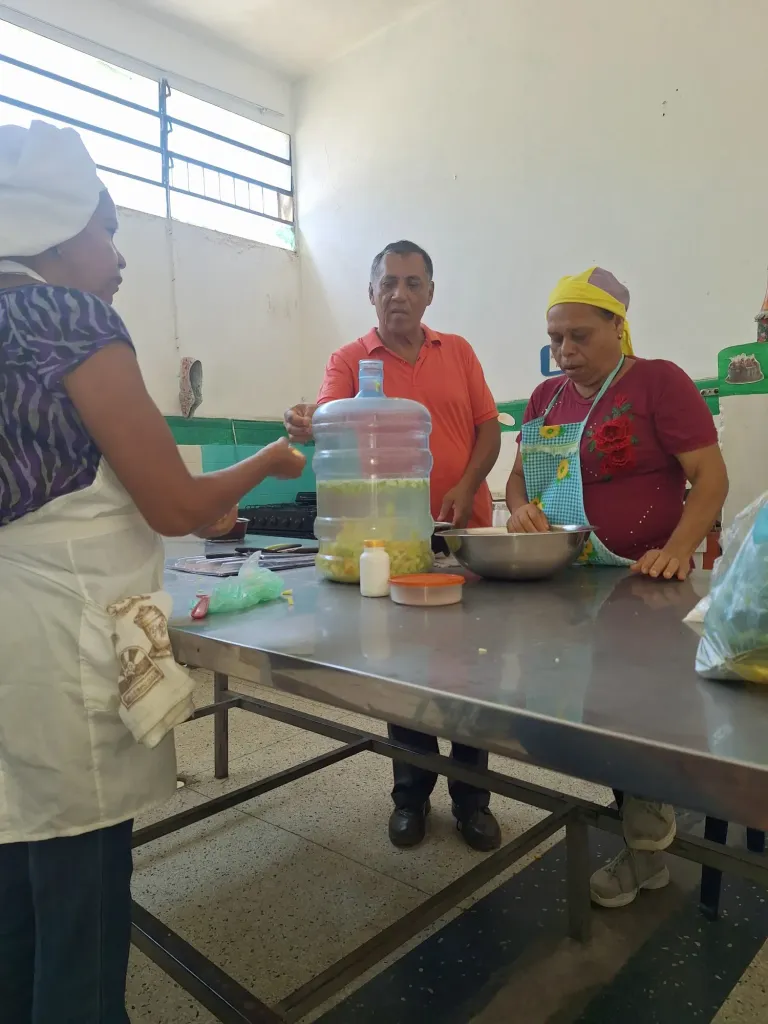
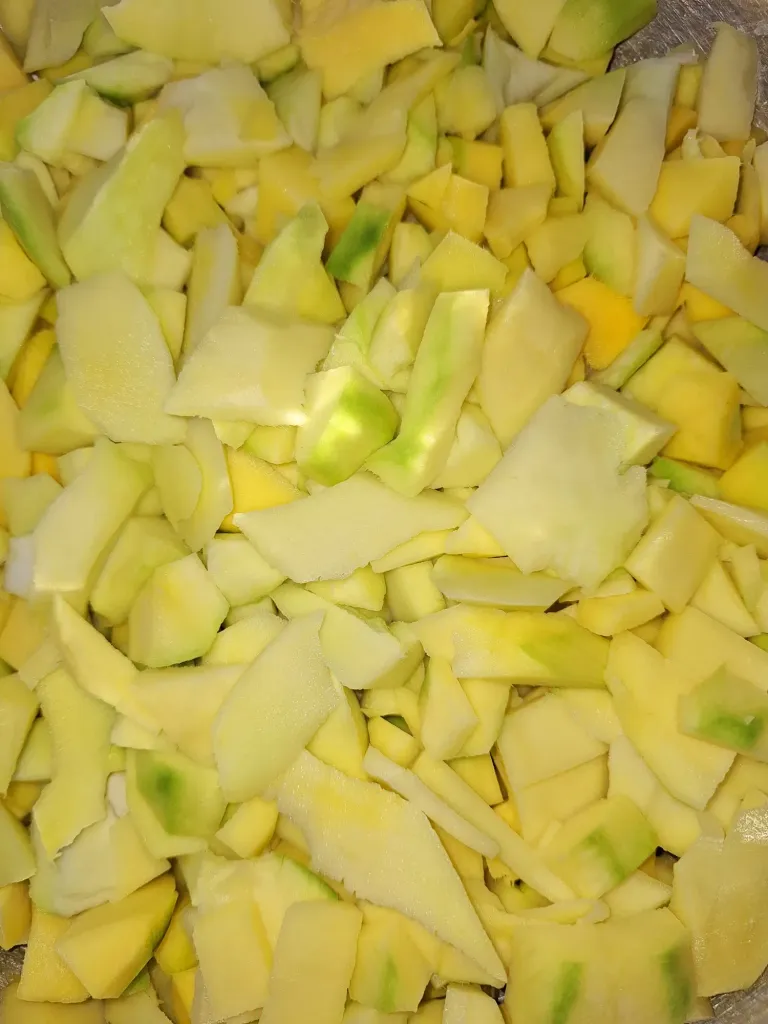
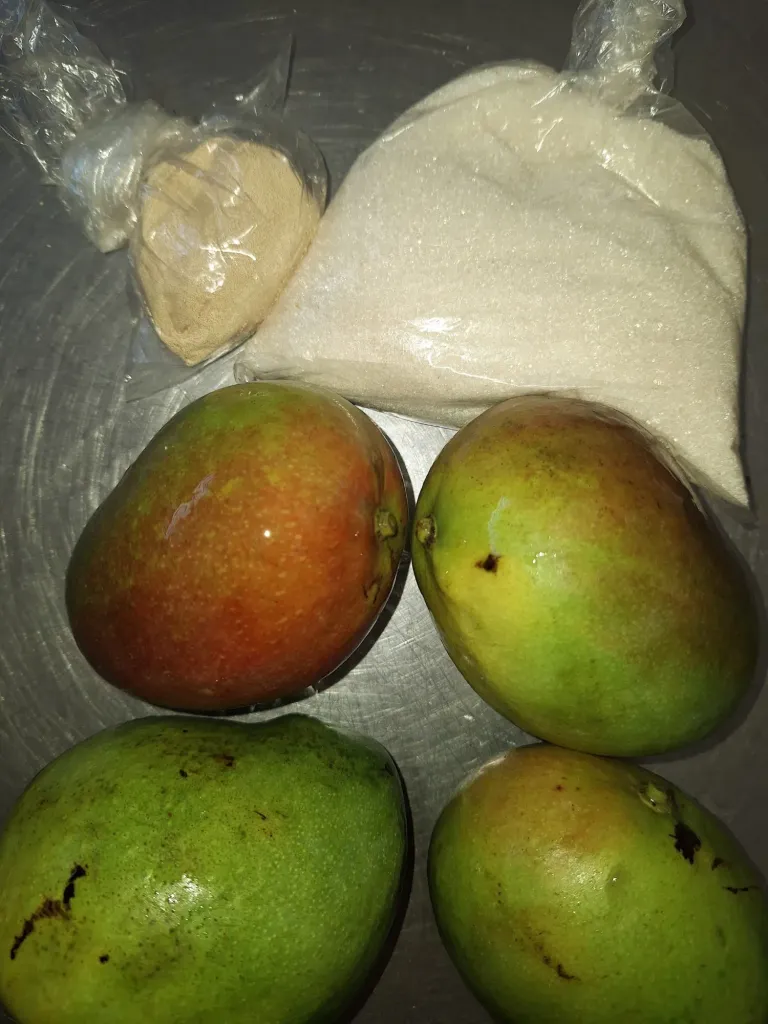
Saludos y bendiciones, mis queridos amigos de @hivefood, tenía días que no pasaba por aquí con una nueva receta. Hoy les quiero compartir una muy fácil, que estuvimos haciendo ayer en el curso que estoy realizando.
Primero, déjenme contarles una pequeña anécdota. Estos días han estado fuertes en cuanto a la economía se refiere y para ir a clase siempre hay que tener los ingredientes para las recetas que preparamos. La verdad es que estaba corta de presupuesto y el martes que tenía clase no fui.
Entonces, la próxima clase era ayer jueves y estaba pensando que ojalá prepararan una receta que no se tuviera que gastar mucho y se me ocurrió que hacer un vino de mango sería una excelente idea, porque salía bastante económico, aunque tampoco tenía los mangos.
Bueno, preguntó en el grupo, ¿qué vamos a hacer y resulta que cuando me responden, me dicen que un vino de mango? Quedé como en shock, me leyeron la mente, je, je, je, pero qué bueno que fue así.
Solo pidieron cuatro mangos, una taza de azúcar y una cucharadita de levadura seca. Y pueden creer que saliendo del apartamento el miércoles en la tarde me encuentro que un joven está en la puerta del edificio vendiendo los mangos verdes, justo lo que necesitaba, así que le compré un kilo para llevarlo a clases.
Bueno, el día de la clase llegué un poco tarde, ya mis compañeros habían picado sus mangos, lave y corte los míos y también me ayudaron. El profe dijo que lo picaran en trozos pequeños para que entraran por la boca del botellón en donde haríamos el vino.
En ese botellón le echamos, como unos seis litros de agua, también el azúcar que llevamos, que no fue mucho, por cierto. Otra cosa fue la levadura para activarla, se echó en media taza de agua dos cucharadas de levadura y una cucharada de azúcar, se esperó un rato y no se activó.
Así que tuvimos que hacer otra mezcla de levadura que tampoco se activó lo suficiente. Así que le pedimos a la directora de la escuela que nos diera un poco de levadura, la probamos en una pequeña taza y enseguida empezaron a salir las burbujas, es decir, si se activó.
Por eso es bueno probar la levadura antes de incorporarlo a las recetas. Pero muchas veces no lo hacemos, confiando en su efectividad y luego nuestras preparaciones no quedan bien.
En resumen, para hacer este vino, en un envase con agua, colocamos la fruta, que en este caso fue mango, azúcar y levadura. Luego se le colocó una manquera por donde botara todos los gases que expulsa la levadura. Lo dejaremos ahí por una semana o un poco más, para luego envasar.
Y bueno, esto ha sido todo por hoy, mis queridos amigos. Gracias por su vista en mi blog. Dios les bendiga.


Mango wine in process
Greetings and blessings, my dear friends from @hivefood, I haven't been here for days with a new recipe. Today I want to share with you a very easy one, which we were making yesterday in the course I am doing.
First, let me tell you a little anecdote. These days have been tough on the economy and to go to class we always have to have the ingredients for the recipes we prepare. The truth is that I was short of budget and I didn't go to class on Tuesday.
So, the next class was yesterday, Thursday, and I was thinking that hopefully they would prepare a recipe that I didn't have to spend a lot and it occurred to me that making a mango wine would be an excellent idea, because it was quite economical, although I didn't have the mangoes either.
Well, I asked in the group, what are we going to do and it turns out that when they answer me, they tell me a mango wine? I was like in shock, they read my mind, heh, heh, heh, but good thing it was like that.
They only asked for four mangos, a cup of sugar and a teaspoon of dry yeast. And can you believe that leaving the apartment on Wednesday afternoon I find that a young man is at the door of the building selling the green mangos, just what I needed, so I bought a kilo to take to class.
Well, the day of the class I arrived a little late, my classmates had already chopped their mangoes, I washed and cut mine and they also helped me. The teacher told them to chop them into small pieces so that they would fit into the mouth of the bottle where we would make the wine.
In that bottle we poured about six liters of water, also the sugar that we took, which was not much, by the way. Another thing was the yeast to activate it, we poured in half a cup of water two spoonfuls of yeast and a spoonful of sugar, we waited for a while and it did not activate.
So we had to make another yeast mixture which also did not activate sufficiently. So we asked the school principal to give us some yeast, we tested it in a small cup and immediately the bubbles started to come out, that is, it did activate.
That's why it's good to proof yeast before incorporating it into recipes. But many times we do not do it, trusting in its effectiveness and then our preparations do not turn out well.
In summary, to make this wine, in a container with water, we put the fruit, which in this case was mango, sugar and yeast. Then we put a spout to release all the gases expelled by the yeast. We will leave it there for a week or a little more, and then we will pack it.
And well, that's all for today, my dear friends. Thank you for your visit to my blog. God bless you.

Mi blog es familiar, de mi día a día, en donde puedo subir fotos de niños u otras personas de mi entorno, NO autorizo a usar mis fotografías sin mi autorización.
My blog is a family blog, of my daily life, where I can upload photos of children or other people around me, I do NOT authorize you to use my photos without my authorization.
Dispositivo | Device | Samsung Galaxy A54
Fotos editadas en: |Photos edited in | CC Express for Picsart / Canva
Separadores hechos en | Separators made in | CC Express for Samsung
Traducción con | Translation with| DeepL
For the best experience view this post on Liketu